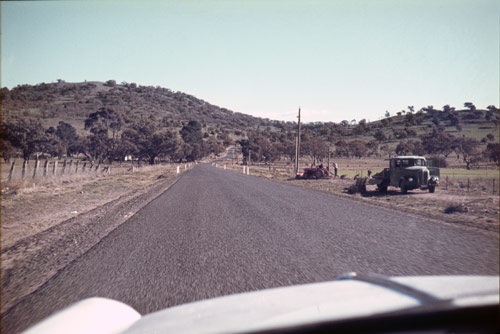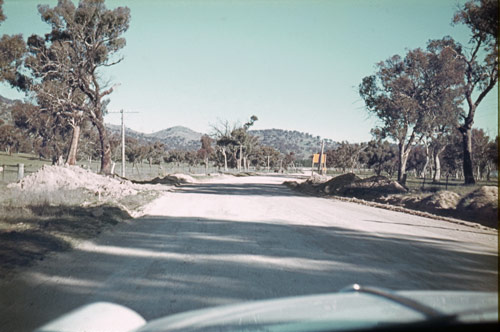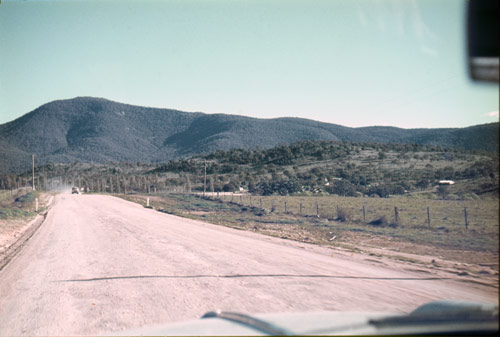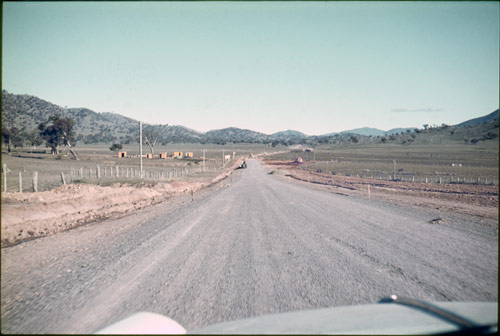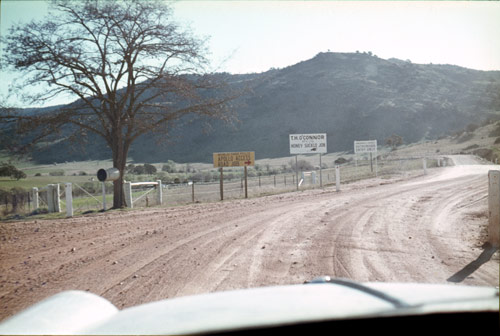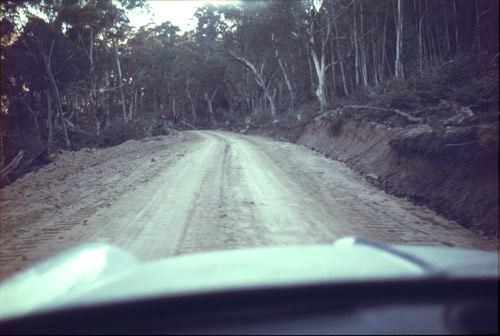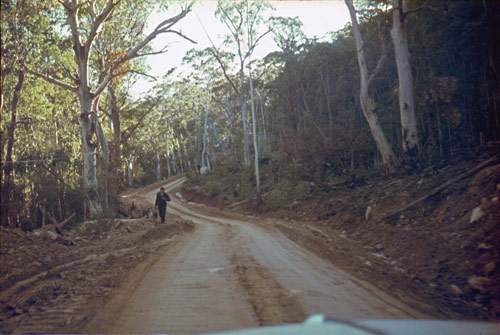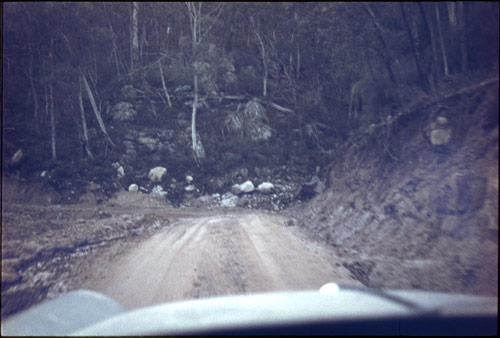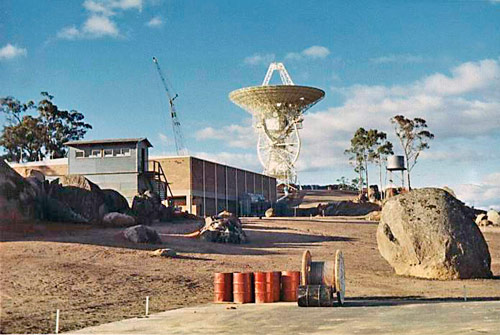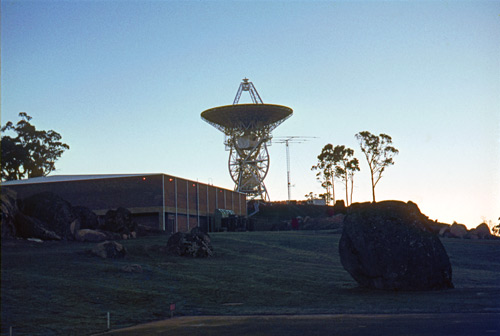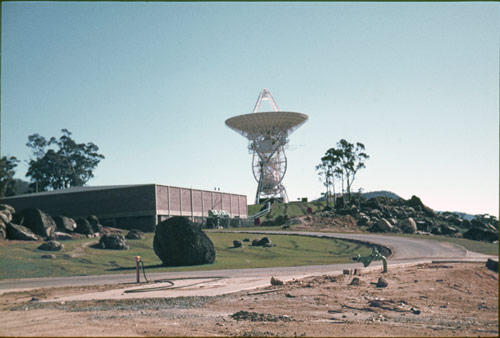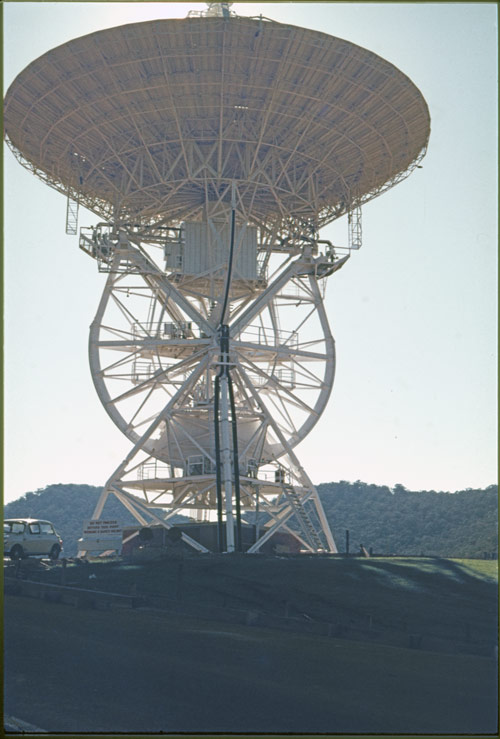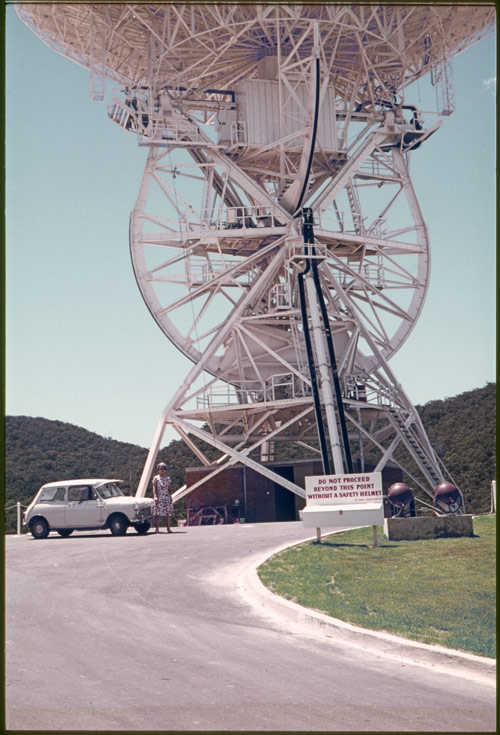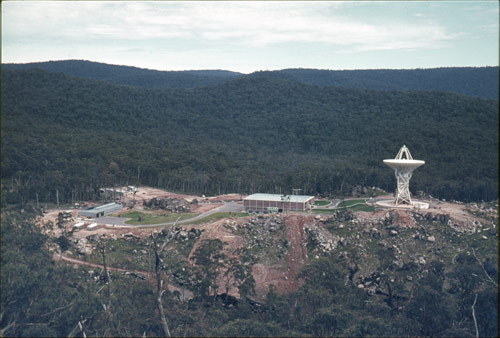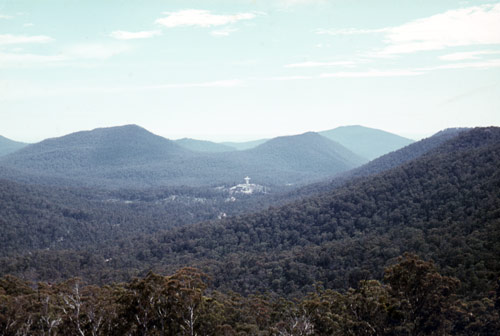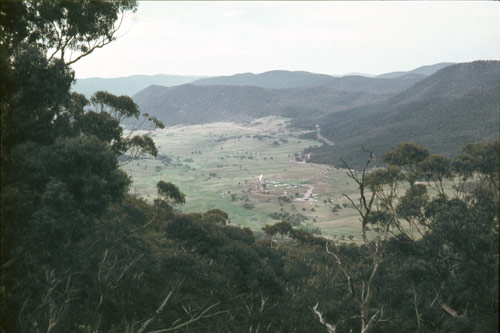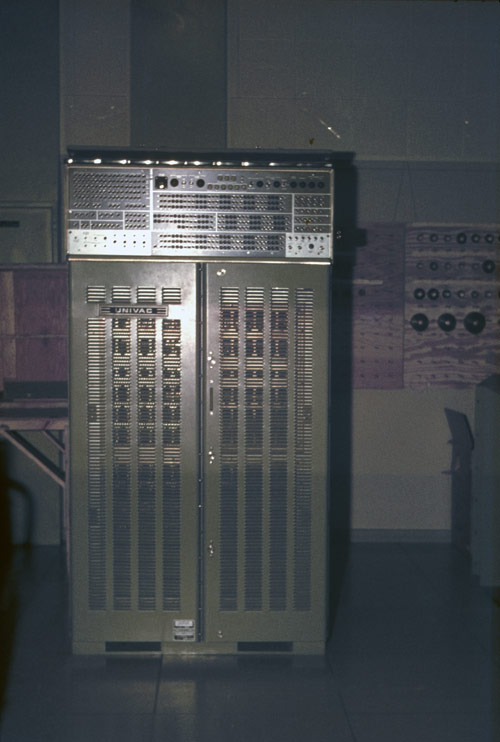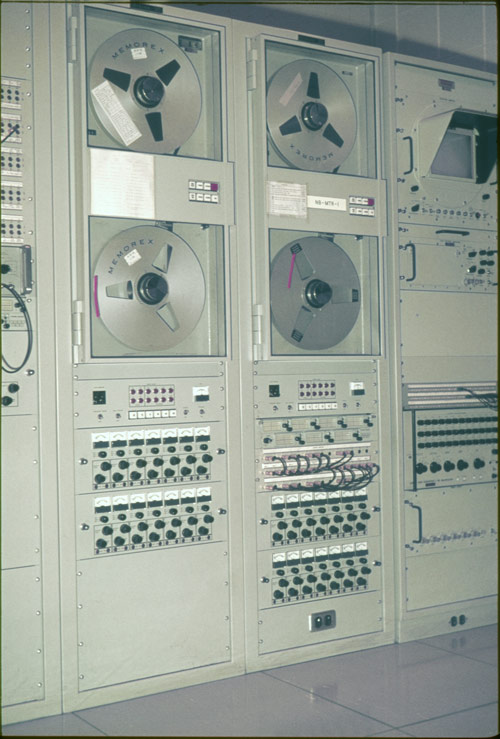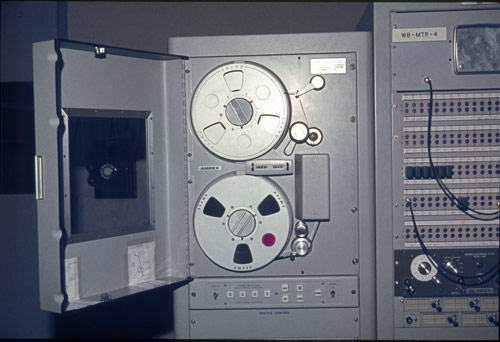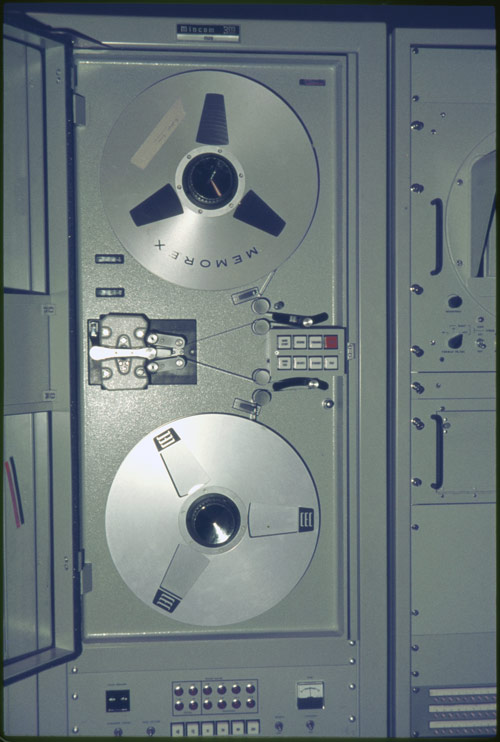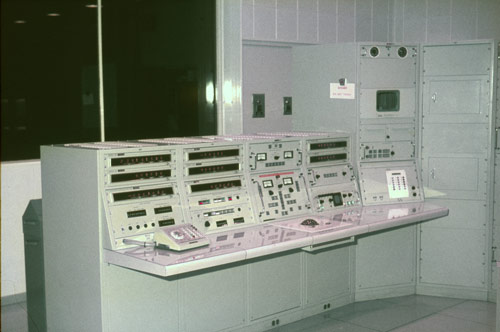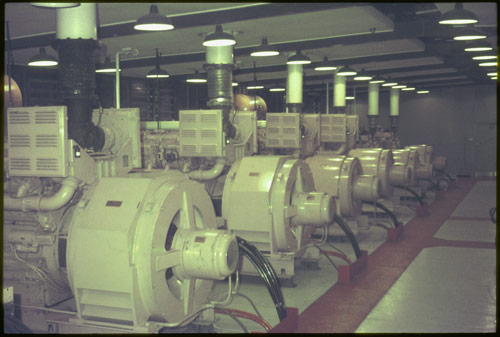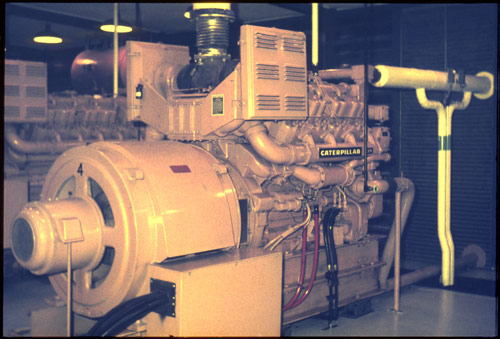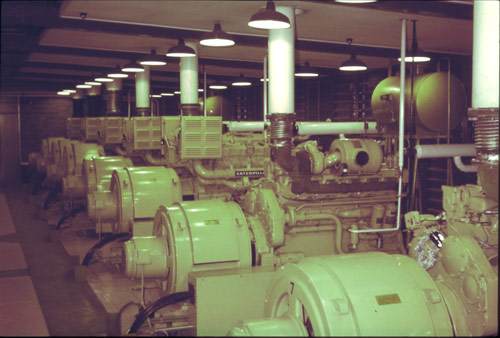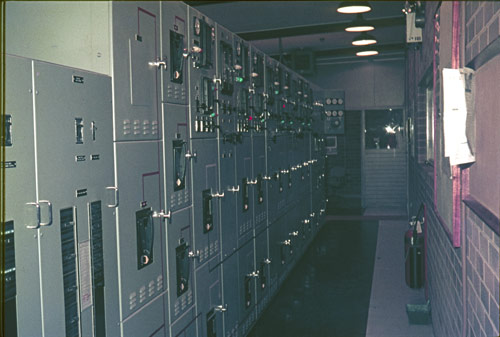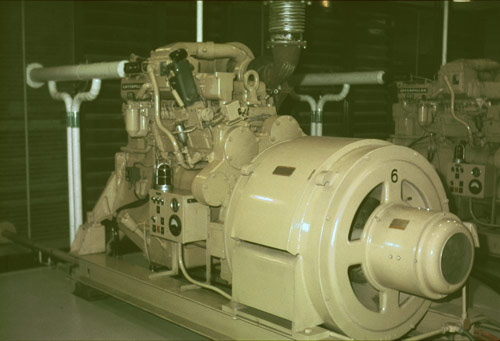Ian Hahn was the second member of the permanent Honeysuckle crew to be on site, and served in the Power House 1966 – 1968.
Ian took photos of the first road as well as the newly-completed buildings and equipment in late 1966.
Earlier scans by Mike Dinn and John Saxon of those slides were posted on the website in 2004. Below are new high resolution scans by Colin Mackellar made in 2019. (The dyes have shifted in some of the slides. I have corrected them with varying success.)
With thanks to Hamish Lindsay and Ian Hahn for the descriptions.
Special thanks to Ian for his loan of his slides!
From Canberra to the turnoff to Honeysuckle Creek
|
Tharwa Road passing Lanyon (on the right). Still gravel here, but
preparations for sealing the road can be seen. |
|
Tharwa Drive between Lanyon and Tharwa (gravel in 1966). Tharwa and Tharwa Bridge are in the middle of the picture. |
|
Booroomba Road between Cuppacumbalong and the present Namadgi Visitors’ Centre. |
And on to Honeysuckle Creek
|
The entry to the Apollo Access Road at the turnoff from Naas Road.
Note the signs for T. H. O'Connor, the station building contractor, and Nicholas Panos Pty Ltd, the contractor for the new road (“The Panos Freeway”) under construction. |
The original road ran along the southern side of Dead Man’s Hill –
separated from the present road by the valley along which Honeysuckle Creek flows.
|
The old track after crossing the Honeysuckle Creek and approaching Dead Man’s Hill. |
|
The original track going along the southern side of Dead Man’s Hill. |
|
The original track going along Dead Man’s Hill.
A lonely figure walks along the track. Note the cable strung through the trees on the left.
(The levels and saturation have been pushed in this scan.) |
Honeysuckle Creek Tracking Station, 1966
|
The antenna, from near the Power House, during construction of the station.
Note the temporary builders offices of T.H. O’Connor in the car park.
(This image is from the original 2004 scan.) |
|
The antenna and Ops Building from near the Power House at dawn.
The builder’s offices have now gone.
|
|
The antenna and Ops Building from near the fuel tanks. The Power House is out of frame to the left. |
|
The newly-completed antenna. |
|
The Station from the water tank. The microwave tower for the link to Tidbinbilla has not yet been erected. |
|
The Station as seen from the Collimation Tower. |
|
Orroral Valley station, as seen from near the Coll. Tower, lies in the borad valley to the south of Honeysuckle.
The Orroral STADAN station had been opened on 24th February 1966. |
Inside the Operations Building
|
An early view of the Ops Console. |
|
The Univac 642B Telemetry Computer. |
|
A Mincom M22 telemetry recorder on the left and a M25 on the right. |
|
Fourteen-track voice recorder.
This may have been a Sanborn 14 track voice recorder that used an Ampex 350 series deck.
(Thanks to Bill Wood, Frank Sullens from Goldstone, and Ken Sheridan for the ID.) |
|
Another photo of the fourteen-track voice recorder. |
|
The Antenna Servo Console. |
|
The JPL Block III receiver-exciter control racks were arranged from left to right:
Exciter 1, Receiver 1, Receiver 2, Exciter 2, Receiver 3 and finally Receiver 4.
With thanks to Bill Wood for the notes. |
|
Exciter 2, Receiver 3 and Receiver 4. |
Inside the Power House
Ian writes:
The total capacity of the power house was as follows:
3 Caterpillar V12 750 kVA,
2 Caterpillar V8 500kVA and
2 Caterpillar Straight 6 250 kVA.
With all units running this was a total of 3750 kVA.
All had mechanical Woodward governers.
All units were electric start and shared a common cooling system.
This enabled the hot water to circulate through all the engines so a quick start and warm up was available.
|
The low voltage control panel and circuit breakers which enabled any of the alternators to be put on to either the technical or utility bus bars.
This was important when a mission was on – so all units were up and running but were connected to the appropriate bus bars.
During downtime the whole station could run on one 6 cylinder 250 kVA unit at about half load, (125 kVA) for the technical bus and one 8 cylinder 500 kVA, again at around half load, to run the rest of the station – such as the air conditioning, lights and power. |
Transparencies by Ian Hahn, Scans by Colin Mackellar.
